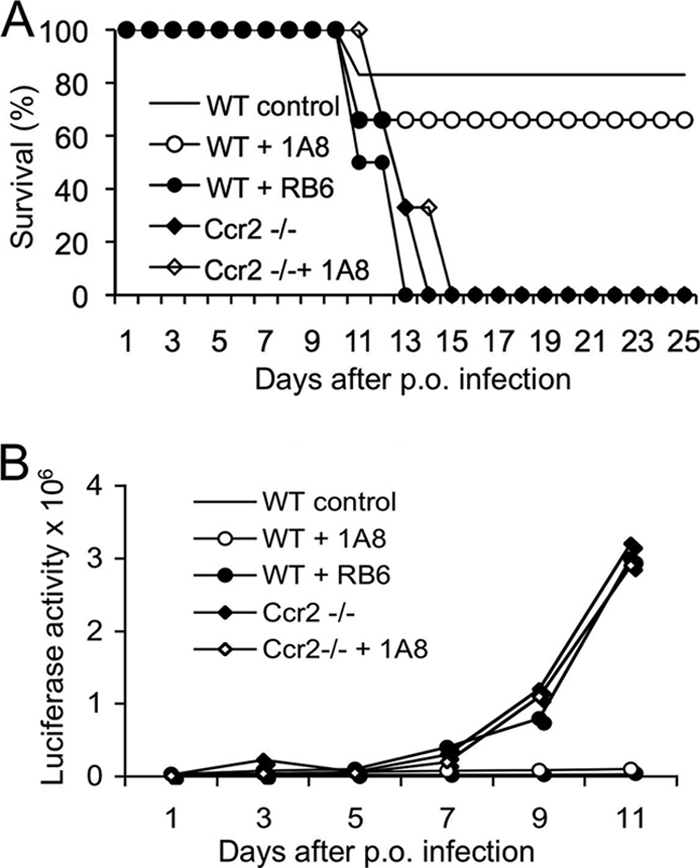FIG. 4.

Survival of mice following oral infection with T. gondii. (A) Mice were infected with 20 cysts of type II gondii (PRU-Luc-GFP), and survival was monitored for 25 days. The majority of infected control mice (WT control) and MAb 1A8-treated mice (WT + 1A8) survived. Ccr2−/− mice, Ccr2−/− mice treated with MAb 1A8 (Ccr2 −/− + 1A8), and MAb RB6-8C5-treated mice (WT + RB6) all died within 14 days after infection. Antibodies were applied daily from days 0 to 5. Data are combined from five individual experiments, with 12 to 16 total animals per group. (B) Bioluminescence tracking of parasite dissemination. Luciferase imaging revealed control mice (WT control) and mice treated with 1A8 MAb (WT + 1A8) controlled the infection. In contrast, Ccr2−/− mice, Ccr2−/− mice treated with MAb 1A8 (Ccr2−/− + 1A8), and MAb RB6-8C5-treated mice (WT + RB6) were not able to control parasite replication. This figure shows one representative experiment (mean ± SD; 3 to 4 animals per group) from five similar experiments.
